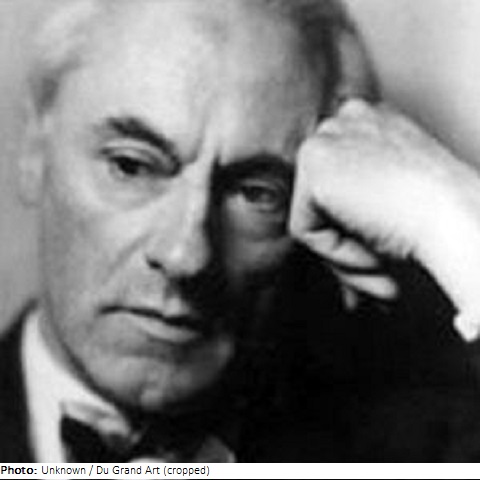Louis Süe

Biographical information
| Roles | Referee |
|---|---|
| Sex | Male |
| Full name | Marie-Louis•Süe |
| Used name | Louis•Süe |
| Born | 14 July 1875 in Bordeaux, Gironde (FRA) |
| Died | 7 August 1968 in Paris VIIe, Paris (FRA) |
| NOC |  France France |
Biography
French painter, architect, and decorator Louis Süe was an important representative of Art Deco in France. After attending high school in Bordeaux, he entered the College Sainte-Barbe in Paris to prepare for the École Polytechnique. However, he left the college to become a student at the École des Beaux-Arts in Paris in 1893.
In 1901, Süe graduated as an architect and, beginning in 1903, created artists’ studios and residences in Paris in collaboration with the architect Paul Huillard (1875-1966). The confrontation with Cubism influenced his architectural style. In 1912, he joined the group of artists of the “Atelier Français” before being mobilized for the army in Greece in 1914. After World War I, he was involved in decorating for victory celebrations in Paris.
Süe broke up with Art Nouveau and in 1919 founded the “Compagnie des Arts Français” with André Mare (1885-1932) and others, for which they designed furniture, wallpaper, decorative fabrics, silverware, and ceramics. As early as 1923, the Metropolitan Museum in New York bought furniture from the company. In 1922 they ran into financial difficulties and the company had to be supported by a shoe industrialist, who eventually sold it to the Galeries Lafayette department store in 1928. With their Art Deco works, the artists around Süe won recognition at the International Exhibition of Modern Decorative and Industrial Art in 1925. There, Mare and Süe created a museum of contemporary art, amongst other things.
Süe designed perfume bottles for the Jean Patou brand and between 1934 and 1937 he was the architect of the remodeling of a house commissioned by the cosmetics manufacturer Helena Rubinstein (1872-1965). In 1937, Süe was entrusted with the decoration of the foyer of the Palais de Chaillot theater.
In 1939, Süe became president of the “Société des artistes décorateurs” (Society of Decorative Artists). That same year, he built the French Village for the New York World’s Fair. During World War II, he lived in Istanbul and lectured at the Institute of Fine Arts. After the war, he built a working-class quarter city in Rupt-sur-Moselle, public buildings, and numerous villas and private residences. He also created theater sets and interiors, e. g. for ocean liners.
Süe was made a knight in 1925 and an officer of the Legion of Honor in 1936. In 1957 he received the National Award. He exhibited as a painter at the Salon des Indépendants and the Salon d’Automne from 1901 and at the Salon des Tuileries from 1923. His motifs were figurative, still lives, portraits, and landscapes.
Besides, Süe was a great sportsman, who practiced running, tennis, rowing, sailing, high jumping, and swimming. He was a friend and lover of the American dancer Isadora Duncan (1877-1927) and had tried in vain to save her two children from drowning, who were in her car when it dropped into the Seine.
Referee
| Games | Sport (Discipline) / Event | NOC / Team | Phase | Unit | Role | As | |
|---|---|---|---|---|---|---|---|
| 1924 Summer Olympics | Art Competitions |  FRA FRA |
Louis Süe | ||||
| Architecture, Open (Olympic) | Final Standings | Judge |